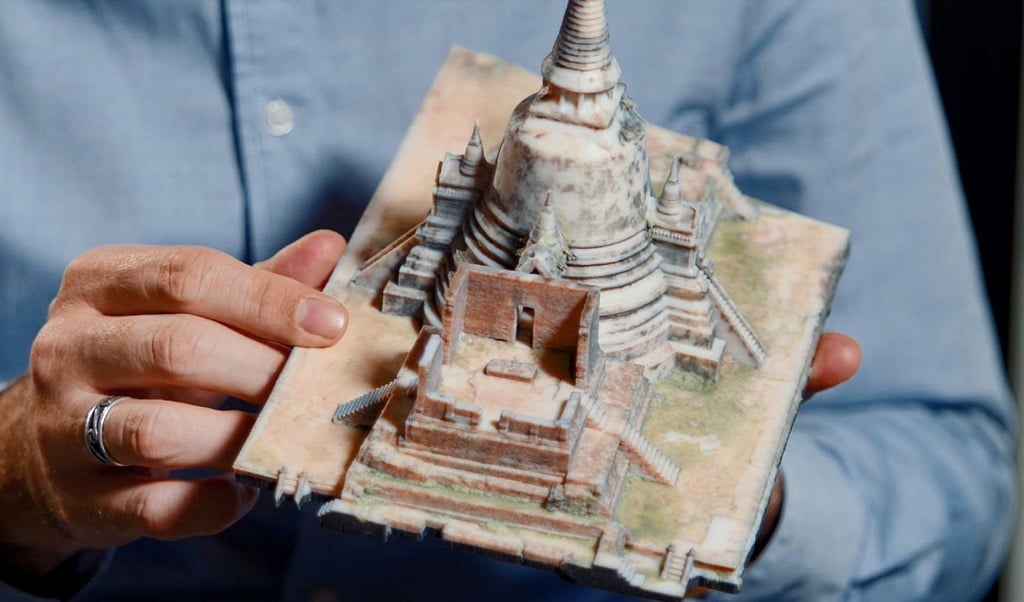![A 3D printed model of Ayutthaya temple in Thailand [Image: Stratasys]](https://fabbaloo.com/wp-content/uploads/2020/05/GoogleA26C_Image_2_img_5eb09dc401cb3.jpg)
Google Arts and Culture is using Stratasys’ 3D printing technology to accurately recreate ancient history.
The idea of turning to 3D technologies to revive long-lost relics isn’t a new one, and this relationship builds on an ever-growing series of wide-reaching initiatives seeing 3D scanning and 3D printing putting artifacts back into human hands. One long-lived effort, CyArk, has seen steps taken to digitally capture and preserve world heritage sites since being established in 2003. CyArk and Google Arts and Culture recently launched Open Heritage, a project to document, scan, and digitally preserve heritage sites.
Turning to 3D printing to up the excitement and hands-on engagement for museums and research, the Open Heritage project now finds a solid partner in Stratasys. The 3D printing company has shown applications of its technologies to recreate ancient artifacts, and now the J750 3D printer will be used for its multi-color, multi-material capabilities to bring realistic replicas to life.
Preserving, sharing, and accessing artifacts helps keep history alive. 21st century approaches to digital archaeology are democratizing the past just as 3D printing democratizes manufacturing.
But why is it so important to really get hands-on with realistic recreations? I spoke with Gina Scala, Stratasys’ Director of Education, for more detail.
“We’re super excited about the Open Heritage project and what Google is doing in order to make artifacts and historical monuments more accessible to the world,” she told me. “It’s amazing that they’re spending that time and that effort to make high-resolution scans of the world available. We’ve seen the work they’ve done with the J750 to digitally recreate these models and artifacts, allowing for another level of realism through that accessibility to hold it. To not just preserve, but to allow historians and archaeologists and students to study it at another level.”
As one example of a particularly standout print, Scala pointed to rare plaster casts that had been housed for a century in the British Museum. Not as an exhibit — the casts were in storage. The casts, discovered in Guatemala in the 19th century by A.P. Maudslay, were too delicate for actual access. So they sat, safe but unstudied. Until 3D laser scanners came into the picture, virtually reconstructing them and coming into physical pieces off a 3D printer.
![3D printed model of the largest free-standing monument in the Americas. Created using 3D scans of plaster casts from the British Museum and 3D printed on the J750. [Image: Stratasys]](https://fabbaloo.com/wp-content/uploads/2020/05/GoogleA26C_Image_1_img_5eb09dc4b6a04.jpg)
“Because of this project, they were able to be scanned and recreated and held; you can see in the video he’s holding it and touching it. We’re taking these things that were not accessible and making them accessible by the convergence of technology,” Scala told me with pride. “By Google funding and running this project, by being able to fabricate and print them, by making them accessible to disseminate and distribute to the far reaches of the world — you no longer need a passport, a visa, or special clearance to see these pieces. You can do it from your desk, from your home. It’s allowing students as well as curious minds open access to things they never would have before.”
That new access is birthing new ideas, raising new questions, and leading to new learnings.
And those learnings are leading to tangible lessons. Scala pointed to research in Colorado in which an anthropologist and a biomedical researcher were studying bone daggers. These ancient weapons, carved from human bone and bird bone, were used as a war weapon and as social currency. The researchers scanned them, did element research — and are applying that research now to medical devices.
“It’s not just for museum curators, it’s not just for heritage, but it’s allowing us and researchers and academics to study history and apply the lessons. That’s one tangible example of history fueling the future,” she said. “What Google is doing is enabling that message about our past to be more accessible to the people who control our future.”
The immediate accessibility Google is known for and the realism that the J750 allows through 3D printing are coming together to enable this democratized vision of future study built upon historical lessons.
When we think about J750 applications, they’re often industrial or artistic in nature; the machine is at the center of a design challenge that I’m excited to judge as Stratasys encourages designers to “make it real” with the realism possible on the advanced system. The different colors (up to half a million) and array of textures and flex of materials do make 3D printing surprisingly realistic — and in academic research, that can have some interesting impact.
“Real means something different to different people; a surgeon may not care about realistic tail lights like a designer would, but does care about the look and feel being as real as possible. We all have a different view on realism. What the J750 does is allow folks to produce that. It’s the power of realism in the designer’s hands. What Google Arts and Culture does is what Google does so well — when you type something into Google you get back what you’re expecting to get back. There’s that access to the world in a digital way, and now in a more tangible way. I don’t need to travel to these places to have access to these things in a tangible way. From my home, from my office, from my school. That’s what’s so powerful about the Arts and Culture program with the J750, that access to realism in a kind of unprecedented way,” Scala said to wrap up our chat.
3D models and backstories are available online for perusal at Open Heritage.
Via Open Heritage and Stratasys











MakerBot’s new Classroom product is set to shake up the education market for 3D printing significantly due to its features, price and most importantly, how it was designed and implemented.